On the Midsummer Friday morning sun was shining and there was still some wind left as we walked on the beach and through the parks towards the Visby’s Midsummer Party. As we passed the gate into inside the city walls the temperature jumped up a lot and we enjoyed the hot sunshine.
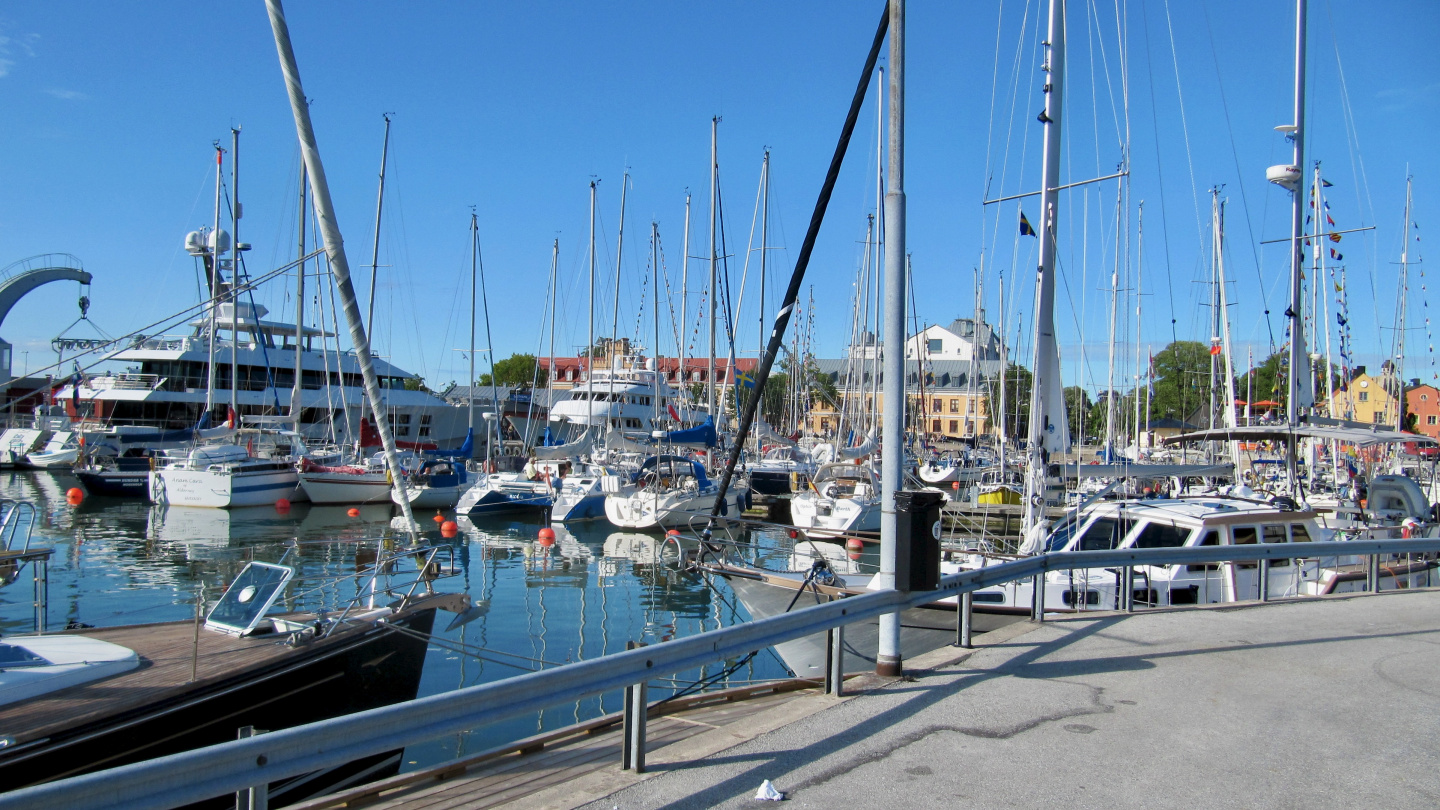
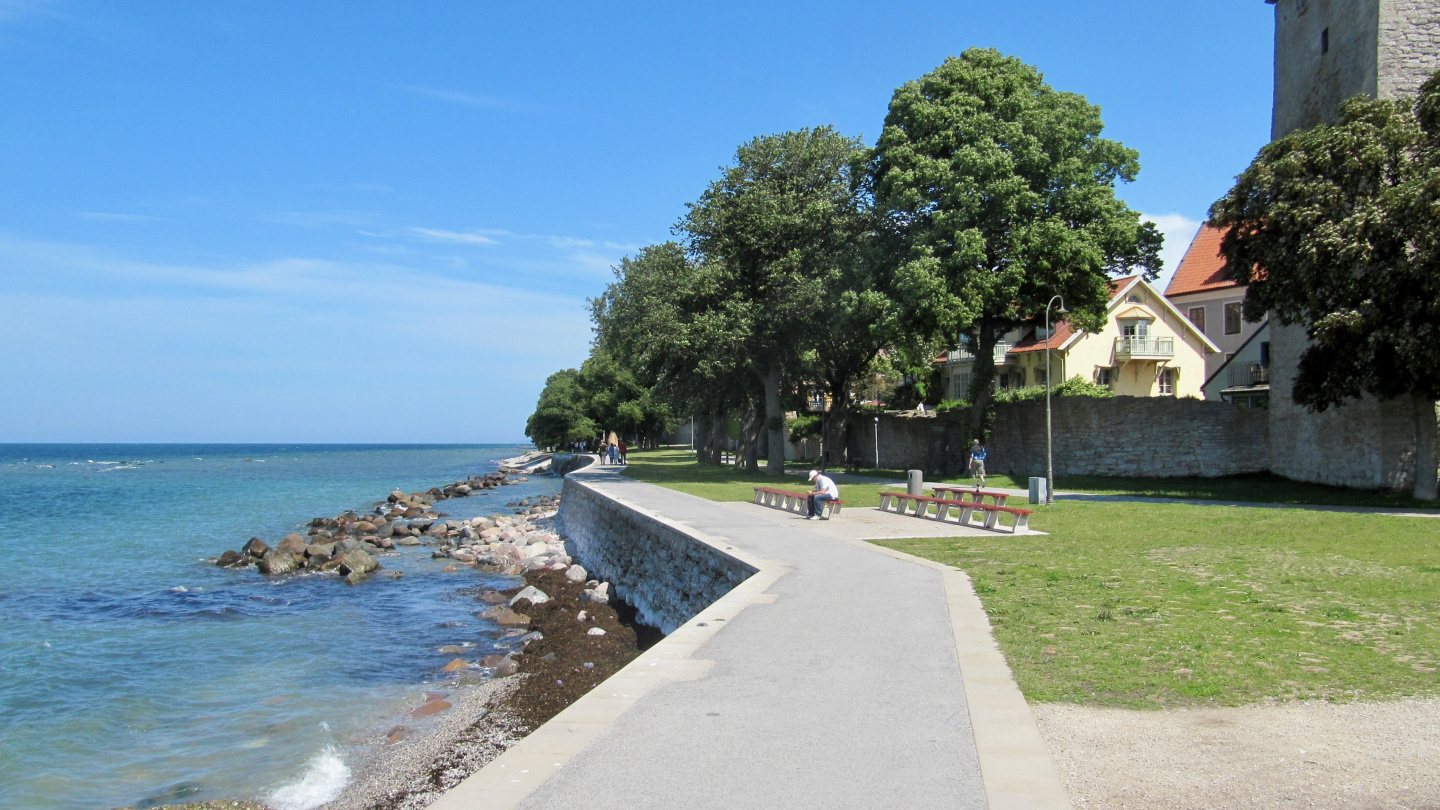
From the harbour there was a beautiful walking trip towards the main event. Visby’s Majstång gathered a lot of people to watch the rising of the Midsummer pole. Whole families with everybody from kids to grandparents were participating.
The program started with the decoration of the majstång. All volunteers were welcome and even Andrus was able to talk me into putting one flower into the leaves.
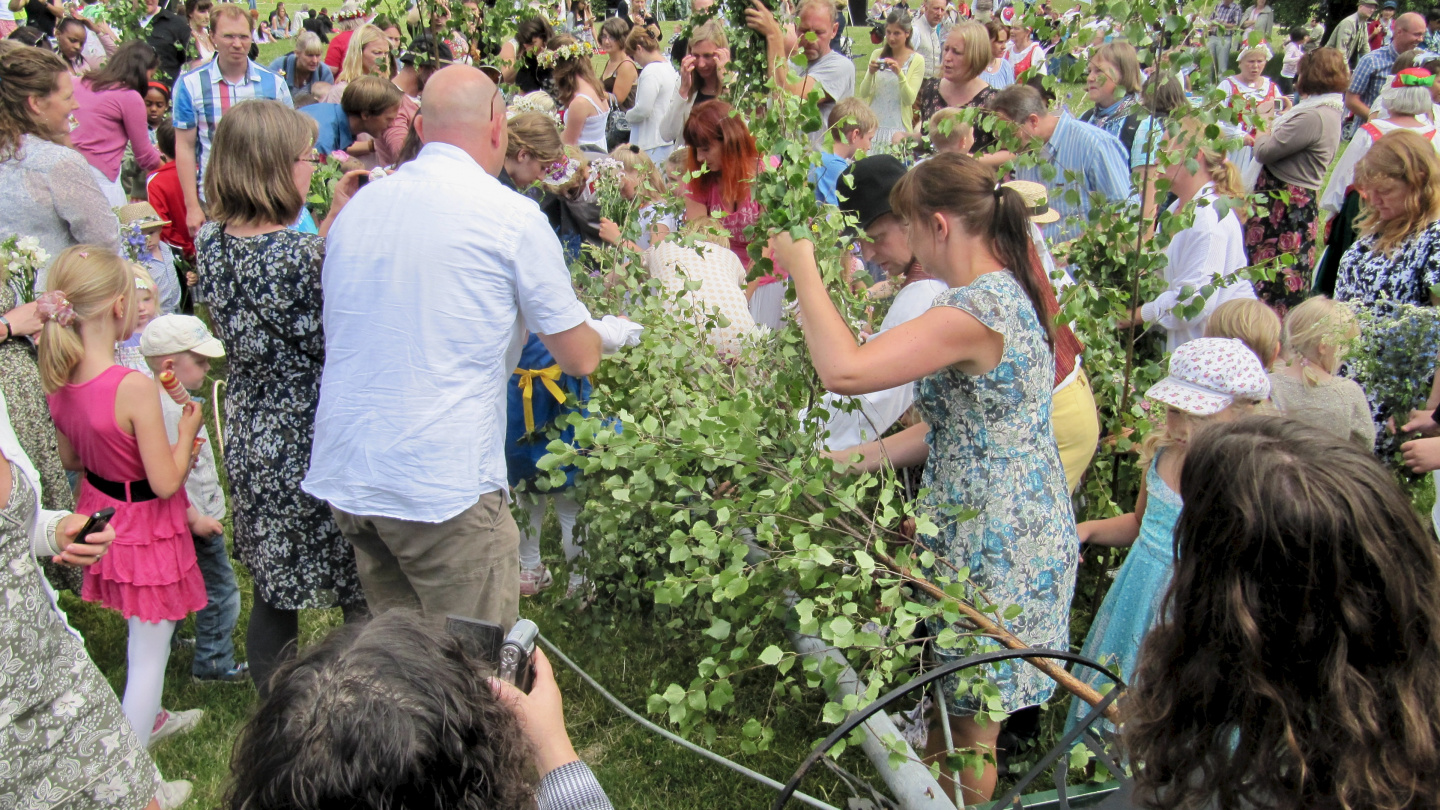
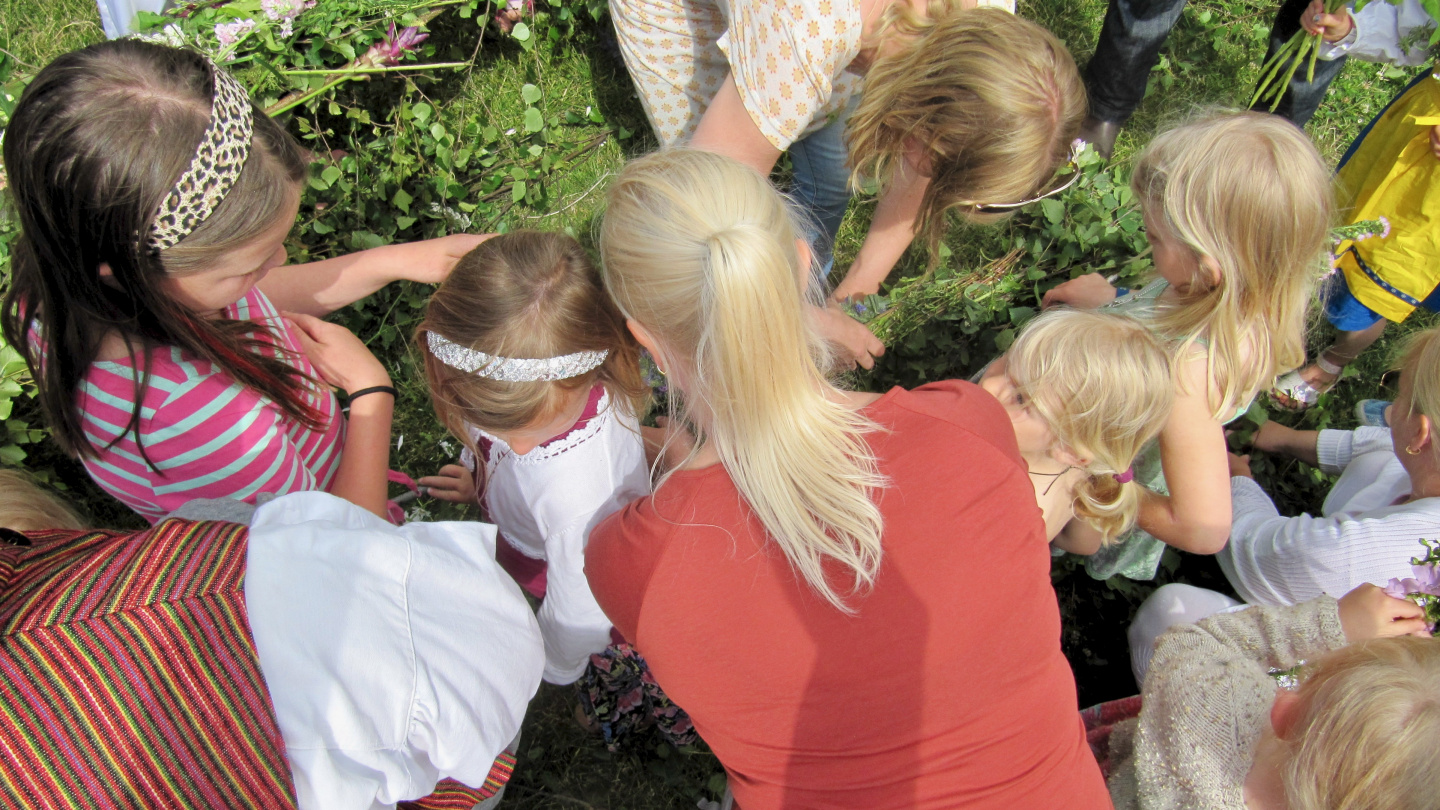
Majstång was raised ceremonially by the local men. After that the folk music was played and a lot of people went to play the ring around the pole. It was funny that all the children’s songs were familiar to us but they were in a “wrong” language. After the common dancing round finished the families took the opportunity to make their own ring one at a time around the pole. Both the locals and tourists took pictures of themselves with the pole.
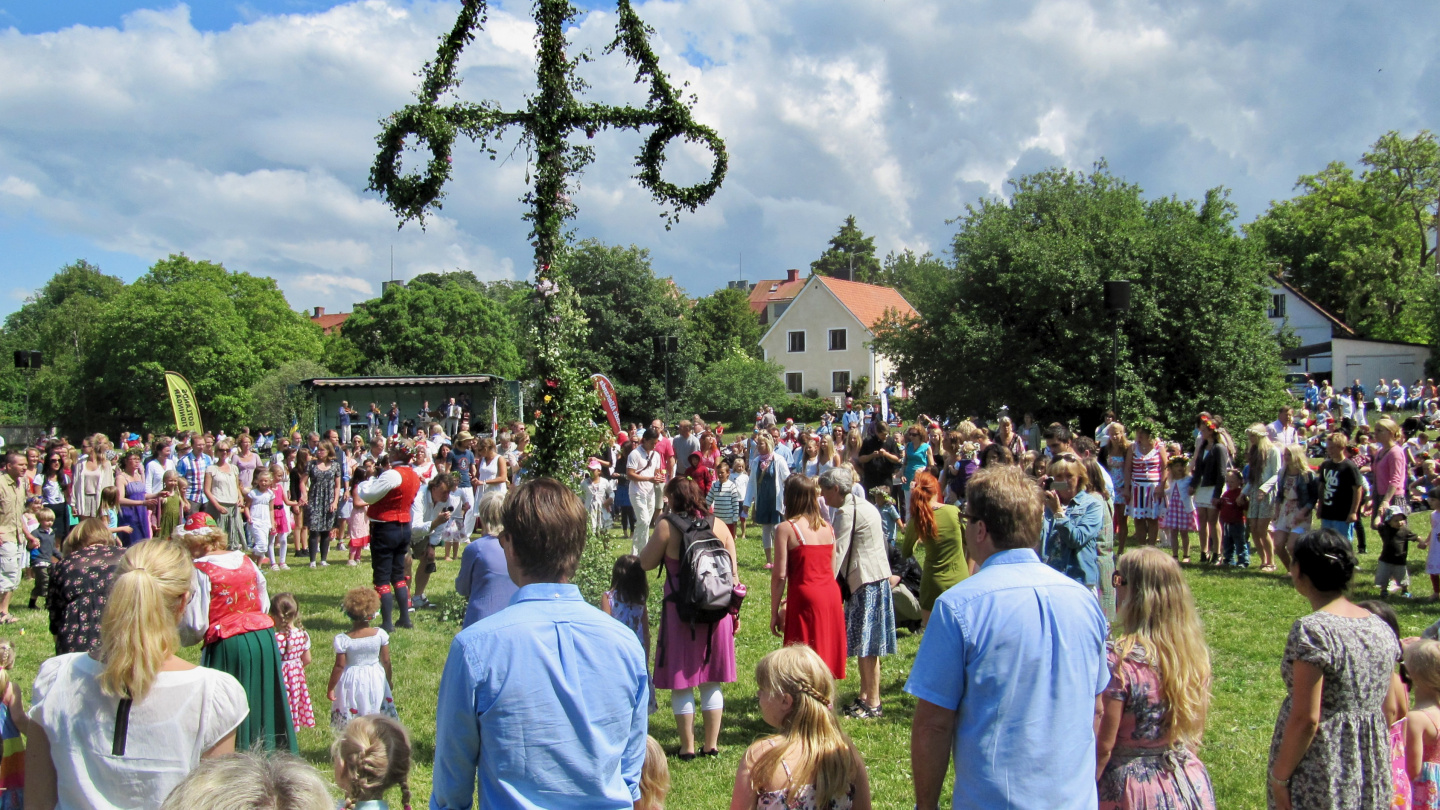
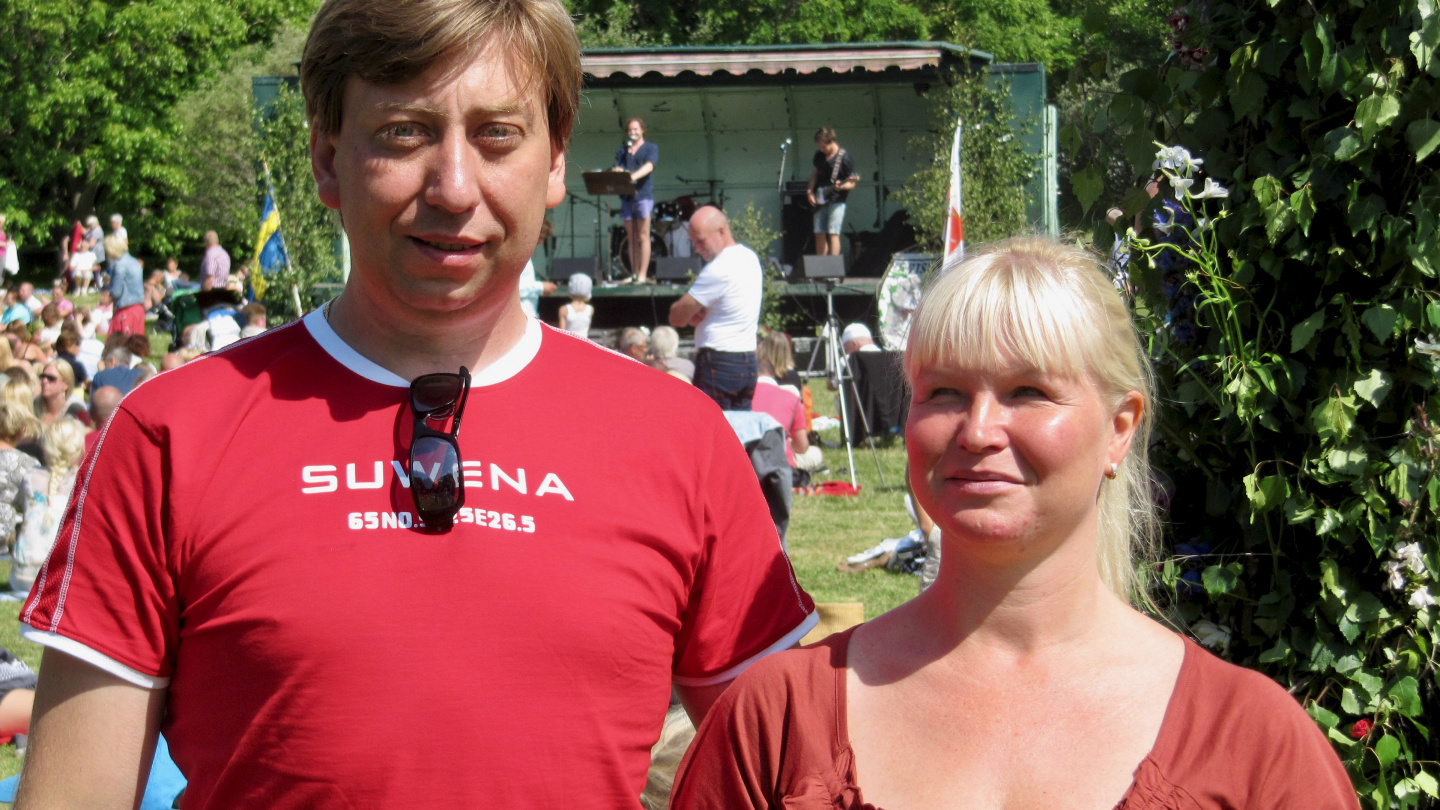
Traditionally the majstång will be decorated by everybody in a village together and the decoration will be renewed only during the next Midsummer Party. The event lasted for few hours and we enjoyed from both singing and dancing performances. This felt like a perfect time to taste the Gotlandic pancake made from rice porridge (saffrans pannkaka) that was served together with the jam and whipped cream. It was an interesting experience.
Visby is one of a few cities where the old city wall is well preserved. The old town is rounded by 3.5 kilometer long city wall that is built in years 1240-1280. Nobody knows who ordered to build the wall. Visby’s heyday was during the time of Hanseatic League and the city has a lot of influence from Hanseatic traders. That must be the reason why Visby’s narrow streets feel similar to Tallinn’s old town.
The island of Gotland has a plenty to explore so it was time for us again to rent a car. We visited Fårö island on the north side of Gotland. The nature on Fårö is much more rough than in Gotland. Both Gotland and Fårö are famous for their sheep growing industry and the flag of Gotland features a sheep as well. On the island there are full of stone fences and roadblocks to keep the sheep on their own land. We also were surprised about the number of camping sites that were already quite full of caravans.
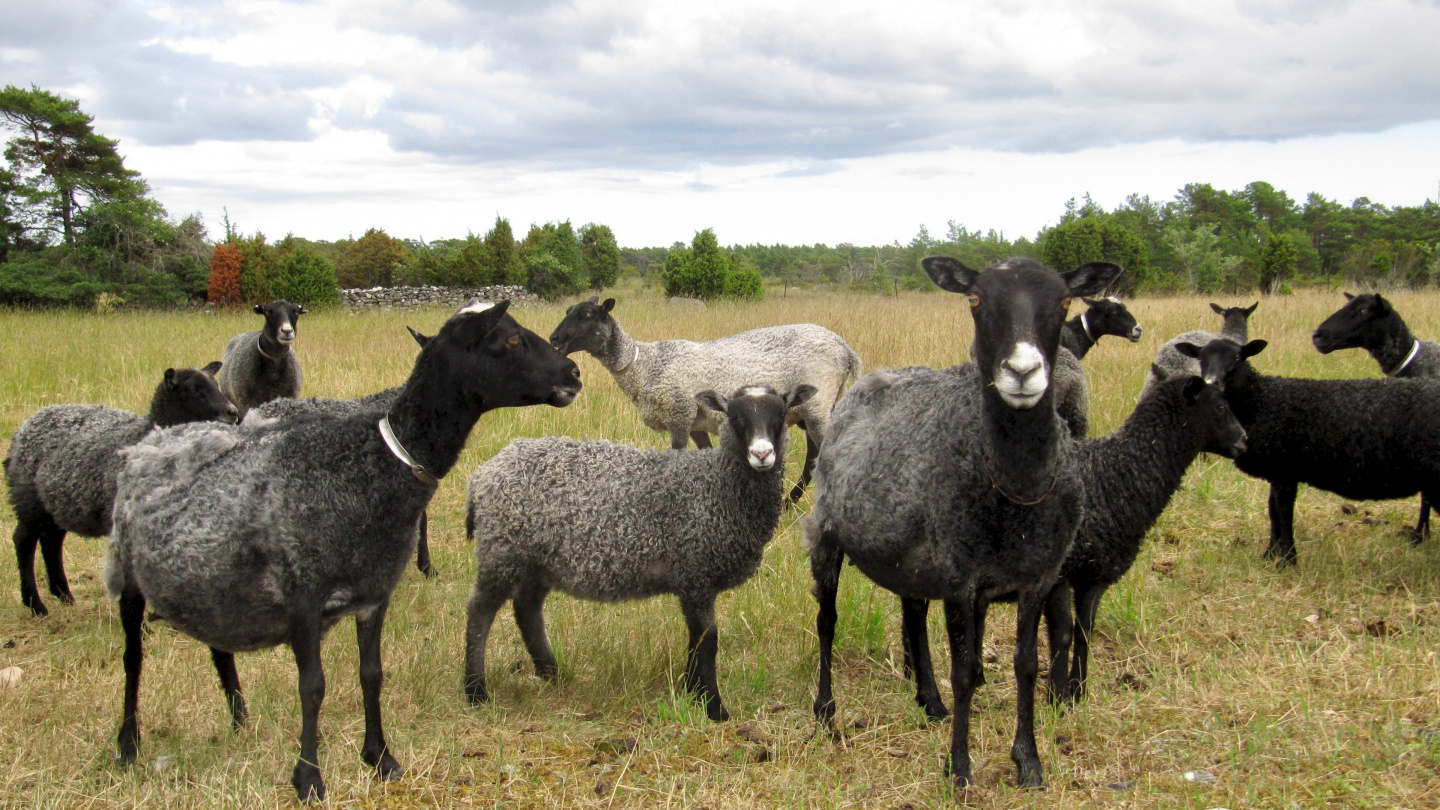
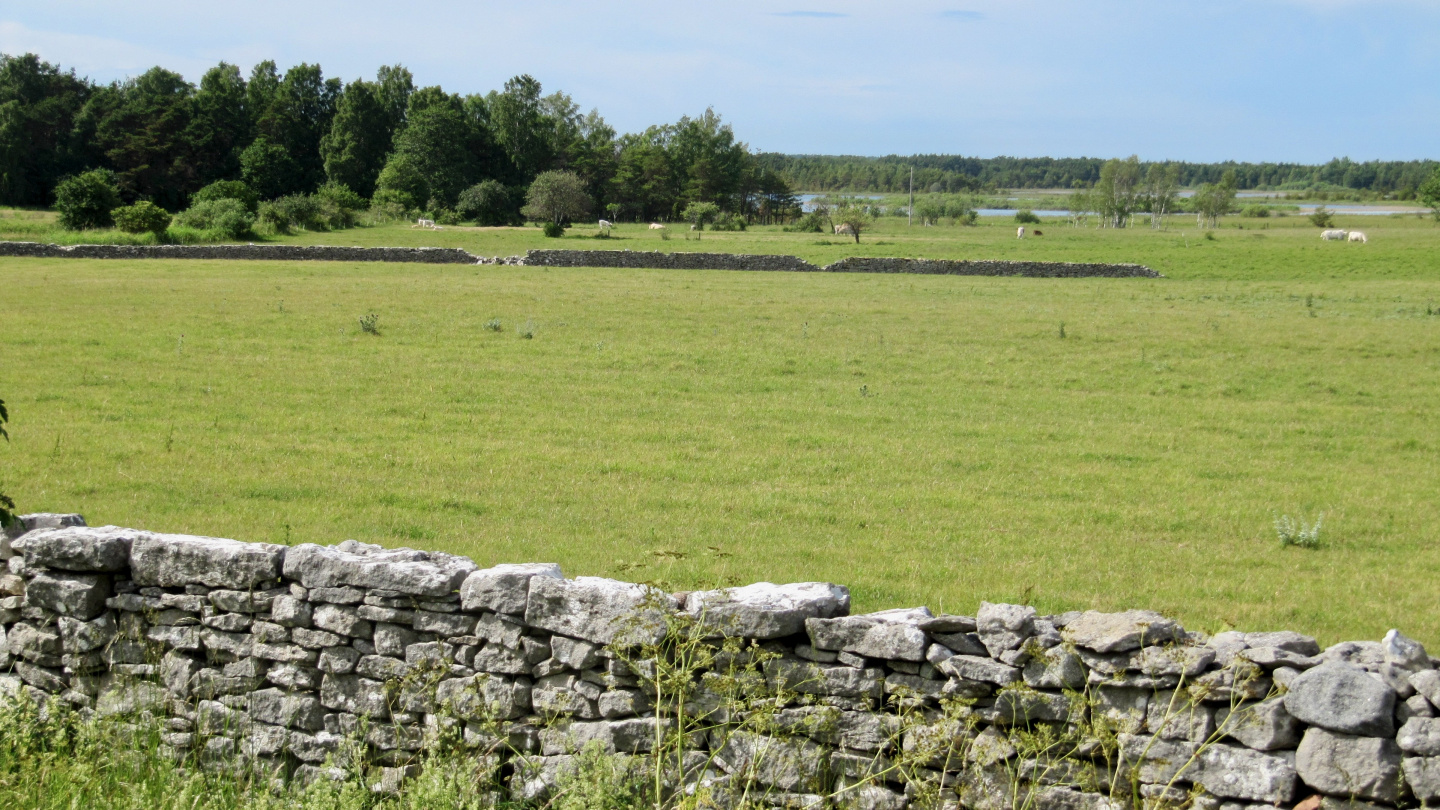
Gotland like the whole northern Europe has been part of the one big continent on the equator 420 million years ago. From there it has parted and ended up here to the cold north. Gotland’s ground is made up of fossils that have turned into the limestone during the millions of years. On many parts of the island we could explore the natural limestone statues that the sea has shaped during the ages.
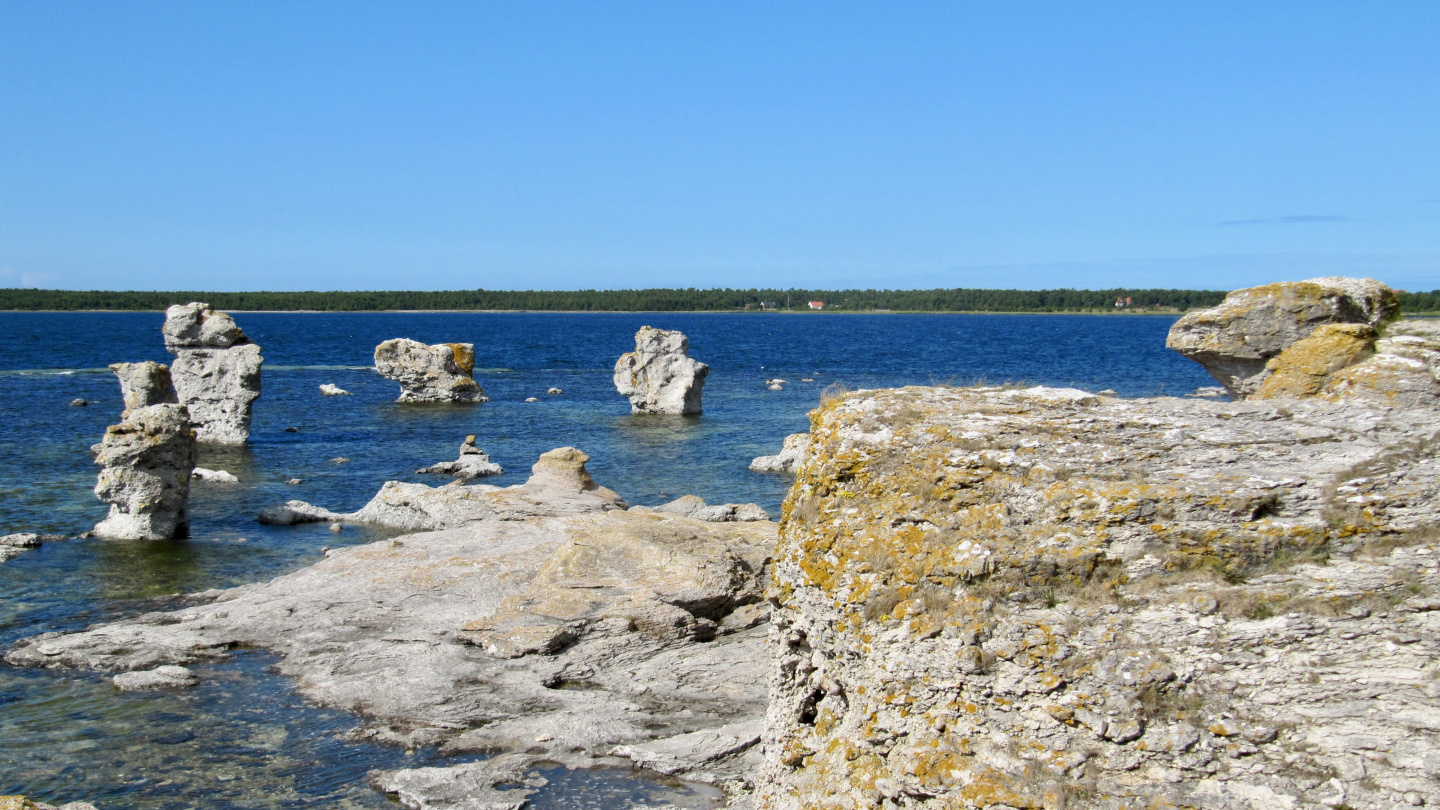
One of the most memorizing sights in Gotland was the Lummelundagrottan (limestone caves of the Lummelunda). The caves can be visited by the guided walking tour and daredevils can participate in the adventure tour as well. Adventurers travel underground by small dinghy and also by climbing the natural caves. For us the walking tour was already an experience. Of course those who looking for a real extreme have been diving in caves as well because most of the cave is under the water. The adventure tour takes people to 500 meters inside the cave while the divers have found 4 kilometres. It is believed that the cave’s total length is 10 kilometres.
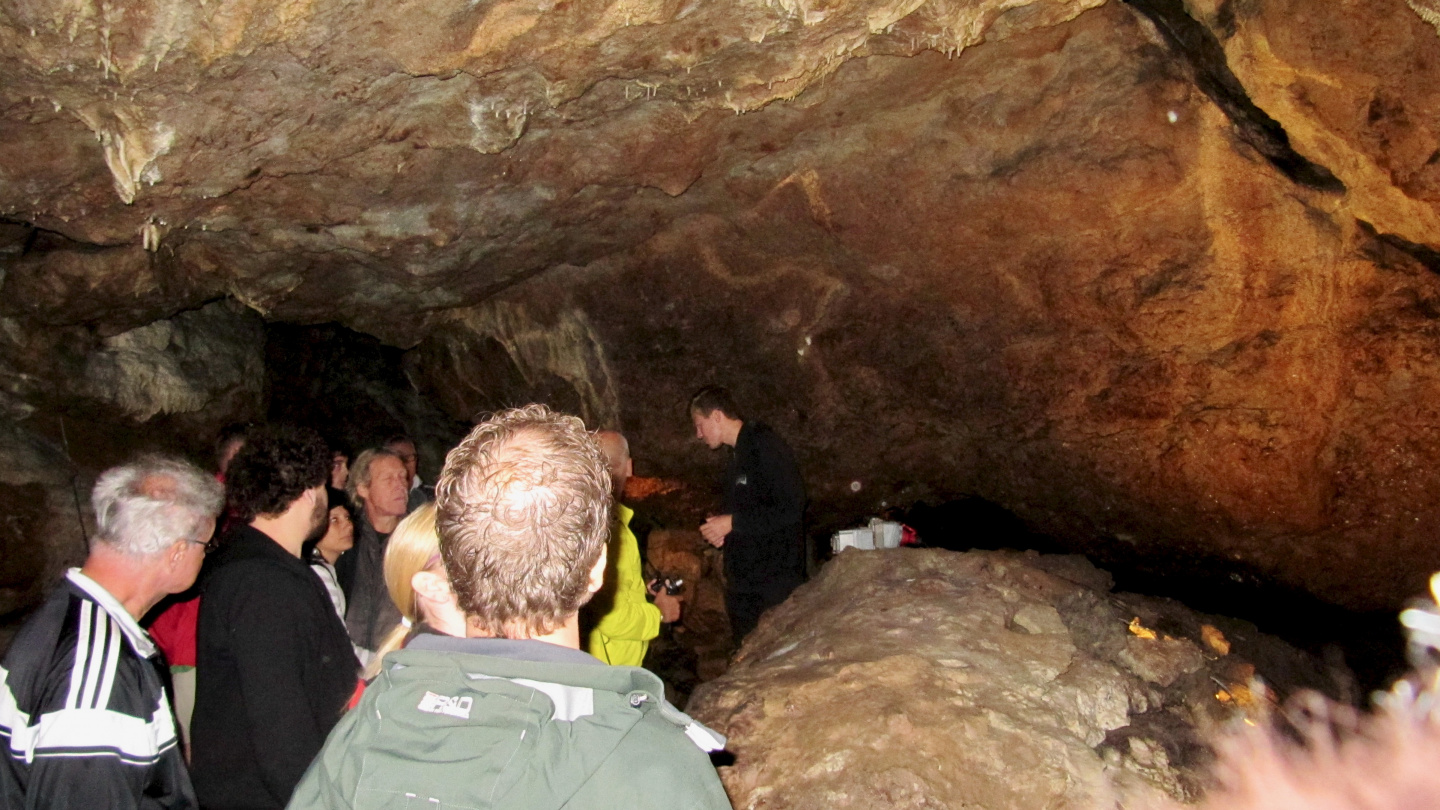
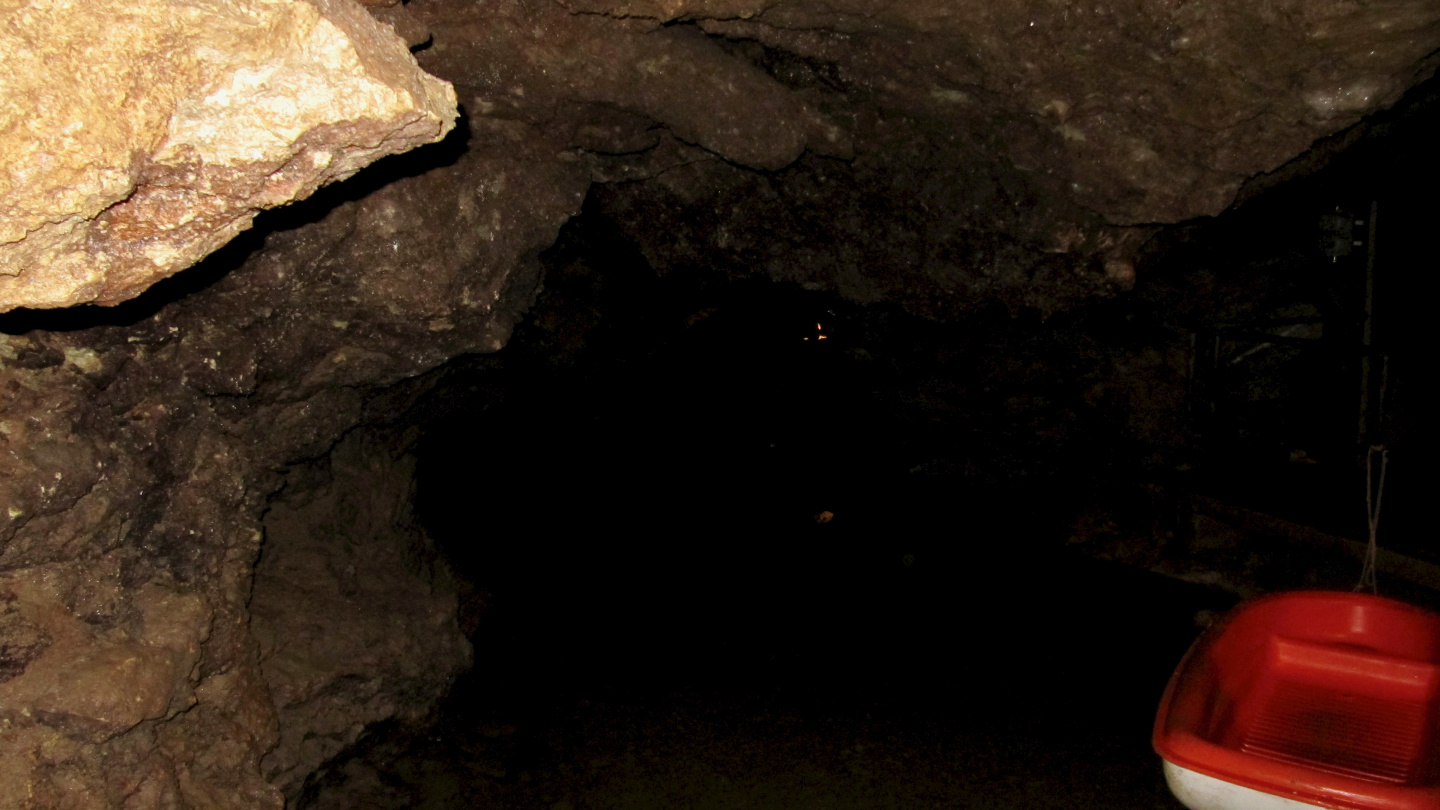
The cave was found in 1950 by three teenage boys who explored the cave for five years before telling about it to the land owner and press. From 1959 on the cave become a tourist attraction and since more safe entrance was dug the guided tours have been arranged.
In the cave we could see both stalactites and stalagmites. The growing pace of the dripstone is not a record breaking. The stone grows one centimeter during one to two hundered years. The exciting safety detail in the cave was a piece of glass glued to the wall. If the walls would ever move and there would be a danger of the cave collapse, the broken glass would give an adequate warning signal.
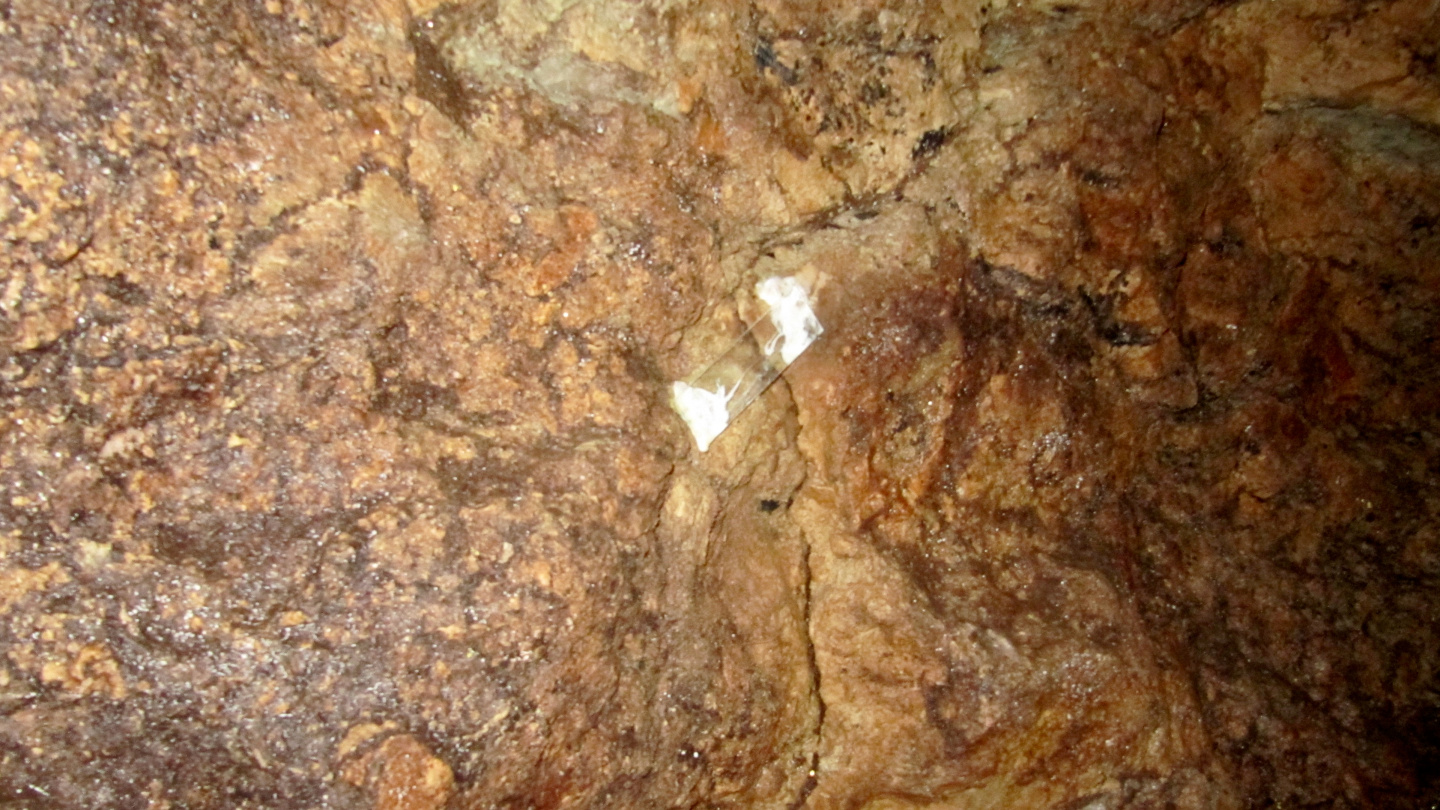
In the cave was also a storage for the cheese from local dairy. Too bad we could not find a shop from where to buy a Lummerlundagrottan cave aged cheese, maybe next time.
In the harbour was also a lot of going on as after the storm on Thursday yachts started to arrive. Yacht Indra who was our neighbour in Nynäshamn was also now in Visby harbour. We made new friends with Göran and Regina from Åland and we spent a nice Midsummer evening onboard Suwena having some strawberries and sparkling wine together.
We also met a pleasant man Raimo who has moved from Oulu to Visby already in 70’s. He has been working as a fish ranger. It is equivalent of the landlubber’s forest ranger. From Raimo we got good tips on what to see and do in Gotland. There are still many more places to see in Gotland so we must come back to Visby again.
Then the strange thing happened, as we returned on Wednesday to Suwena. Somebody has taken our shorepower cable. 20 metres of the cable was missing and instead there were two short half-broken extension cords. There we stood and wondered who would dare to take a cable from another when from end of the floating dock from German yacht a British guy showed up. He had borrowed the cable and promised to return it when they are leaving. The case was that their own cable was not long enough to the end of the dock and they needed to charge the battery. On Friday morning the German yacht untied her lines and took cables and then left. From their neighbour we heard that there was a party until the wee hours and the Brit was still sleeping when the German guys sailed away. Well, I guess in next harbuor they have enough shorepower cable. We marched into a shop to buy a new one. We also made a nametags S/Y Suwena for all our cables and adapters in order to keep them at home.
Even we have plenty of stories from Visby, one more thing we must definitely mention is the delicious, amazing, tasty Sia ice cream. We bought a full cold bag of different flavours of ice cream and sorbet so we can remember Visby. The Sia ice cream is so good because they make all ice cream into real cream and flavoured only with real fruits and berries. The sorbet on other hand is without any milk and fat at all. Both are unbelievable good. No wonder Sia has almost 20% market share in Sweden.
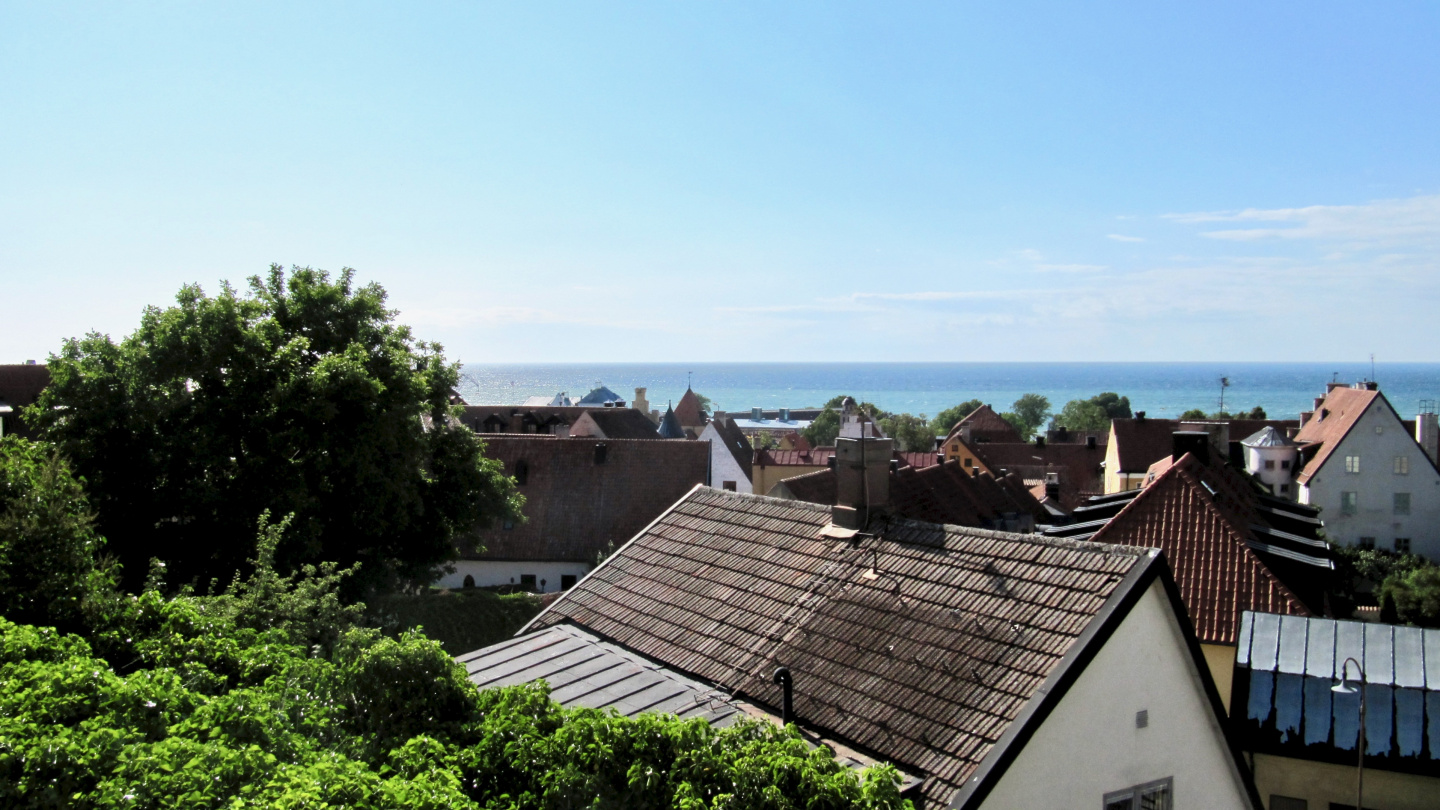
On Monday we made Suwena sea ready. We cast of the lines just before ten and started a voyage towards the Hoburg and Gotland’s east side. Our destination was Vändburg and the leg length was 55 miles. Our plan was to wait for suitable weather for crossing the Baltic Sea in Vändburg with the target to make the crossing on Tuesday or Wednesday.

